While do-it-yourself projects can be fun and fulfilling, there is always a potential for personal injury or property damage. We strongly suggest that any project beyond your abilities be left to licensed professionals such as electricians, plumbers, and carpenters. Any action you take upon the information on this website is strictly at your own risk, and we assume no responsibility or liability for the contents of this article.
How to Build a DIY Compost Bin
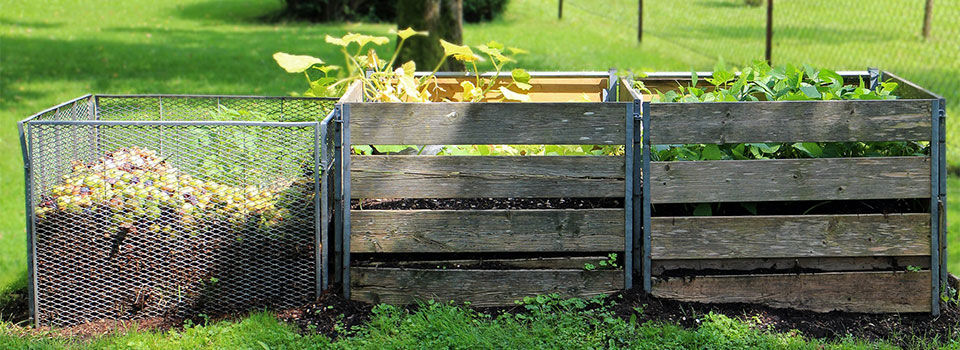
Composting has been a hot trend for the last few years, and interest in it shows no sign of slowing. Why? Well, this slightly messy process has a bunch of big benefits, especially for home gardeners and those who love to landscape. Compost is a great source of nutrients and organic material for the soil, loosening and enriching it at the same time. It can be used as mulch, as part of a container mix, or to turn in the soil to improve it. Making compost at home from leaves, grass clippings, and food waste is also a great way to reduce how much waste you put into local landfills. Here’s how to build three easy compost bins that fit different needs for different kinds of gardeners.
Repurpose a Trash Can or Other Container
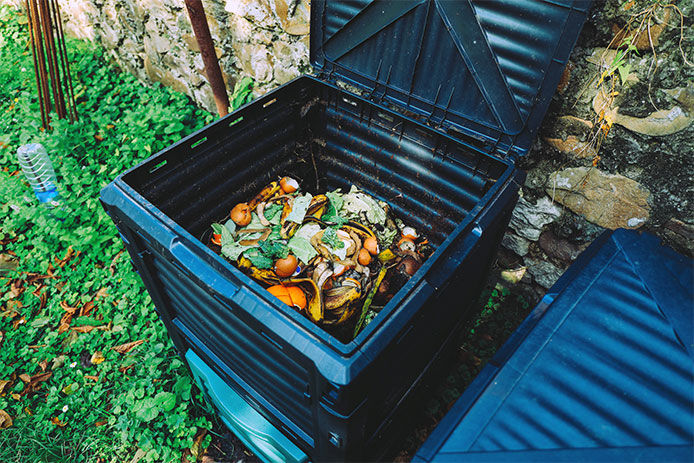
If you only plan to recycle yard waste, a plastic or metal trash can with holes drilled in it is likely all you need. Many homes are located in areas where composting food waste outdoors is infeasible or prohibited by their homeowner’s association rules. You can still compost yard waste like leaves and clippings to make useful mulch even when living with these rules. It’s more convenient than burning and cheaper than bagging it up for trash pickup. Simply add in the yard waste as it’s produced and use a tool like a hard-toothed rake or a garden hoe to stir the material a few times a year. Unlike other types of compost, you don’t have to worry about adding water or balancing different materials. Just keep stirring, and within a few months to years, the material will turn into fluffy black loam that’s ideal as a mulch and soil amendment.
Build a Big Bin from Pallets
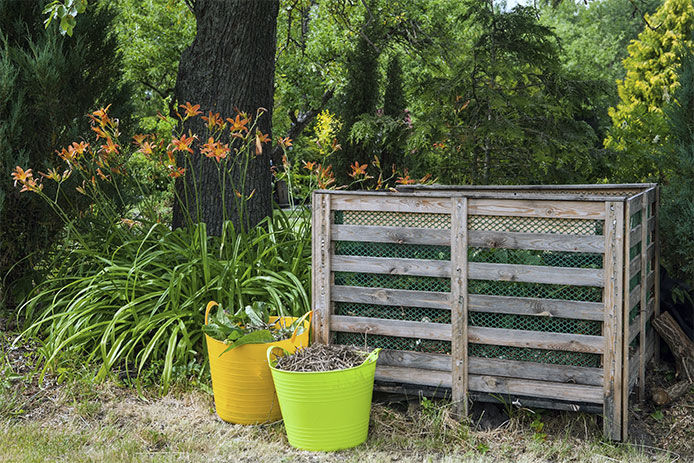
Wood pallets make the process of building a bigger compost as easy as possible. They’re available from almost any company that receives large shipments of goods, often for free. For thorough and quick composting of food scraps, you’ll need to build a compost bin that is at least a cubic yard, or three feet by three feet by three feet. Most commercial compost bins are far smaller than this and don’t heat up enough in the middle for a hygienic or rapid breakdown. Full-sized shipping pallets are usually four feet square or larger, making them ideal for quickly building a backyard compost bin.
Pick out a relatively level spot away from your home that has decent drainage to an area that can handle extra nutrients, like a healthy section of lawn. Set at least three wood pallets up on their sides so they form a U-shape and use deck screws to fasten them together. Five or six screws on each side should be enough to make a secure frame. Add a fourth pallet to completely contain the compost and help it stay as warm as possible, or leave it an open shape for easier turning. Staple hardware cloth inside the pallets if you’re concerned about attracting animals or want to contain every last scrap. The bin’s ready to use as soon as it’s set up. Just follow a reliable guide on mixing yard waste and food scraps in the correct proportions.
Roll Up Some Mesh for a Quick Compost Bin
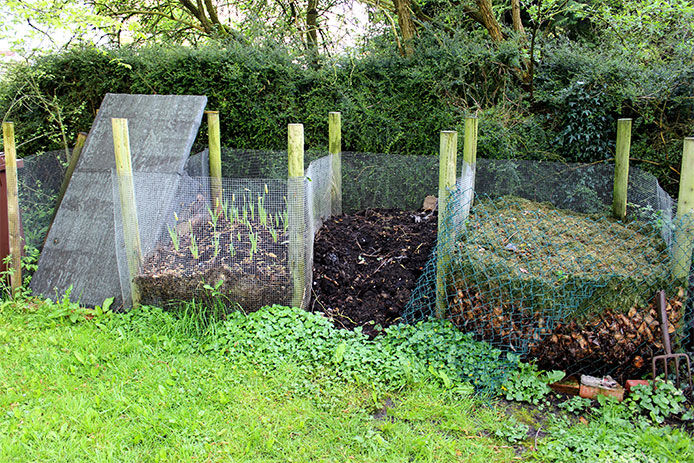
For the fastest compost bin that still works for food scraps, buy a roll of hardware cloth or similar wire mesh that is at least three feet tall. Set it up on its side vertically and use a few fiberglass rods or metal T-posts to secure the bin. Try to stretch the material out so that it is at least two to three feet in diameter. A 10-foot-long roll should give you enough material to make at least two mesh compost bins this way. Layer in your compost materials and leave them loose enough to turn as necessary with a long-handled garden tool. When the compost is done, it’s as simple as pulling up the mesh and gathering up the pile of finished material. These bins do require regular watering to stay moist enough since they’re so exposed to air on all sides.
What to Put in Backyard Compost
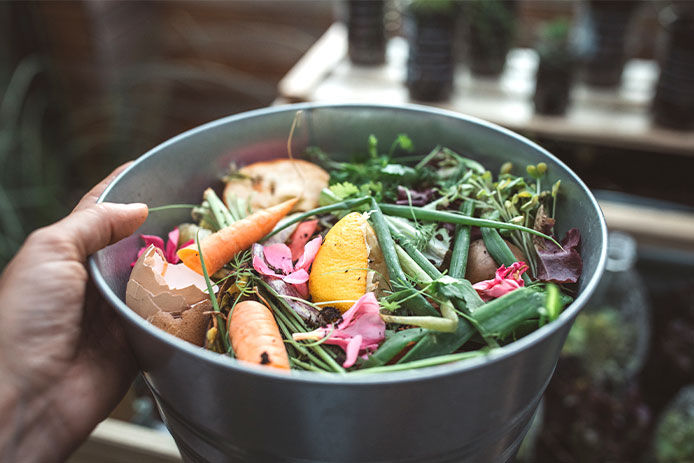
Starting a compost bin, regardless of style, requires more than just food scraps piled haphazardly. You need 30 parts of carbon for every one part of nitrogen, and most food waste you add is primarily nitrogen. That means you must add a lot of dry leaves, old straw, dried grass clippings, chipped wood, and similar material to bulk out the rest of the scraps. Green grass clippings and fresh yard waste can add a lot of nitrogen, so it’s not as easy as just adding landscaping trimmings either. Everything from newspaper and paper scraps to sawdust can go into a compost bin to help balance out nitrogen sources. Keep dairy and meat products out of backyard compost bins since they require special handling not to produce bacteria or attract animals.
With these plans, you’re ready to get started with backyard composting without a big investment. Try out one of each style of compost bin to see which one works best for your home.